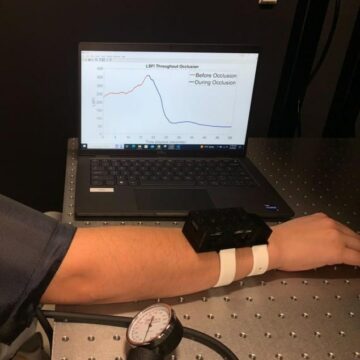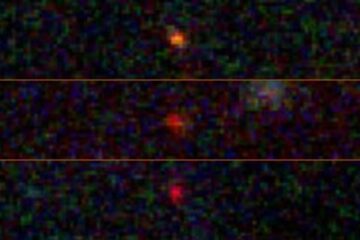A technique for characterizing nanoparticles in suspended mixtures has been created by researchers in Austria. Developed by Marko Šimić and colleagues at the University of Graz, the new technique drives nanoparticles into spiral trajectories with size-dependent velocities – allowing nanoparticles of different sizes to be studied separately. This new approach could lead to improvements in how nanoparticles are processed.
Nanoparticles are used in a broad range of commercial products and industrial processes including cosmetics, paper, paints and pharmaceuticals. Many of these applications involve suspending nanoparticles inside a liquid or gel, and to ensure the best possible performance of these products it is important to control the size of the nanoparticles.
This can be done using dynamic light scattering – a technique that relies on the random Brownian motion of nanoparticles in a liquid. Brownian motion occurs when a nanoparticle is jostled by surrounding molecules and therefore the motion is more pronounced for smaller particles. The Brownian motion is revealed by measuring fluctuations in the light scattered by nanoparticle mixtures.
Slow motions
While this technique works reasonably well for smaller nanoparticles, larger nanoparticles are less affected by Brownian motion, so their sizes are far harder to monitor. In addition, the technique cannot characterize size in real time, which is an increasingly important requirement for modern manufacturing processes.
Šimić’s team has taken a new approach that it calls optofluidic force induction (OF2i). This involves pumping a nanoparticle mixture through a microfluidic channel, along the same direction as a weakly-focused optical vortex. The latter is a laser beam with a wavefront that twists around the direction of propagation like a corkscrew and carries orbital angular momentum.
Particles of different sizes are accelerated to different velocities by the laser beam, providing a way of characterizing particle size in the sample. However, because differently sized particles move at different velocities, particle collisions are common – which degrades the velocity separation.
Twisted light
Šimić’s team solved this problem by using twisted laser light. This transfers angular momentum to the nanoparticles, driving them into spiral-shaped trajectories. Particles with different masses follow different trajectories, which prevents collisions.

Atoms and molecules make vortex beams
Šimić and colleagues detected the light scattered by the spiralling nanoparticles using a microscope placed beneath the channel – allowing them to track the trajectories of individual particles. From the shapes of these trajectories, they could then determine the velocities of the corresponding nanoparticles. Using this information, they could determine the sizes of the particles in the liquid in real time.
The team tested the set-up using polystyrene nanoparticles, with diameters ranging between 200–900 nm. These sizes are beyond the capabilities of dynamic light scattering. By adapting their technique further, the team hopes that OF2i could also be used to measure other nanoparticle characteristics, including their shapes and chemical compositions.
For now, it is still uncertain whether OF2i will work for materials other than polystyrene, and this will be the focus of the researchers’ future experiments. But if their technique maintains its performance for other nanomaterials, Šimić and colleagues hope it could provide a flexible workbench for nanomaterial processing that paves the way for new advances across a wide array of applications.
The technique is described in Physical Review Applied.












